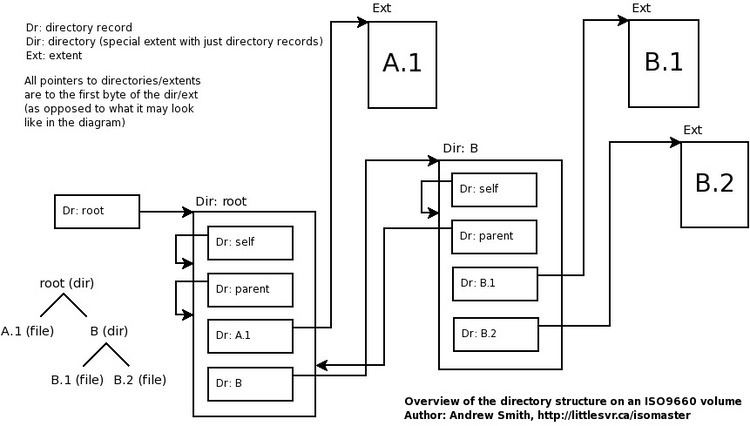A brief introduction to ISO 9660 standard, its history and its directory and files standard.
The ISO 9660 Overview
What is ISO 9660 standard? In this article, MiniTool will tell you what it refers to. ISO 9660 is the standard file system for CD-ROMs and also widely applied to DVD and BD media. It can be stored on USB memory sticks and hard disks. ISO 9660 is the only generic file system at present, supported by all types of computers and all burning software.
It supports various computer operating systems such as Windows, classic Mac OS and Unix system. If you want all CD-ROM drives to be able to read recorded discs, you must use ISO-9660 or a compatible file system.

-image from alchetron.com
ISO 9660 is not a complicated file system, but it has a few quirks that are worth noticing. It seems that some operating systems can create incompatible CDs, so be careful about it. The ISO 9660 file directory name conforms to the 8.3 principle that the directory depth cannot exceed 8 layers.
At present, the ISO 9660 file system currently has two standards, Level1 and Level 2. Level1 is compatible with DOS and its file name is in the traditional 8.3 format. Besides, all characters can only be 26 uppercase English letters, 10 Arabic numerals and underscores. Level 2 is improved on the basis of Level 1, allowing the use of long file names, but does not support DOS.
History of ISO 9660 Standard
ISO 9660 evolves from High Sierra file system. High Sierra arranges file information in a densely ordered layout, minimizing non-sequential access by using a hierarchical (eight-level deep directory) tree file system arrangement that is similar to UNIX and FAT.
To facilitate cross-platform compatibility, it defines a minimal set of common file attributes (directory or normal file and record time) and name attributes (name, extension and version) and uses a separate system usage area, each of which region has a future optional extension file that can be appointed.
High Sierra was adopted by Ecoma International as ECMA-119 in December 1986 (with changes) and submitted a quick track to ISO which was finally approved by ISO 9660:1988.
In 2013, ISO released the first amendment of ISO 9660 standard, and introduced new data construction and loose file name rules, aiming to achieve a coordination between ISO 9660 and widely used Joliet Specification. In December 2017, ISO published the 3rd version of ECMA-119, which is technically identical to ISO 9660 amendment.
Directory and Files of ISO 9660 Standard
The directory entry is located behind the root entry where it begins to evaluate file names. Both directories and files are stored as ranges, which are a contiguous series of sectors.
Files and directories are distinguished only by file attributes that indicate their nature (similar to Unix). The file attributes are stored in the directory entry of the description file or in the extended attribute record.
To find out the file, you can check the directory names in the file path in order to go to the location of the subsequent subdirectories. You are able to locate the position of files through the path table that has every related directory, its parent and its location information on the disk provided by the file system.
As the path table is stored in a continuous area, you can jump to a specific location in each directory in the file path to search faster shortening the seek time.
The standard specifies three nested exchange levels:
- Level 1: File name is limited to 8 characters with a three-character extension name. The directory name is limited to 8 characters too. Files probably contain a part of file.
- Level 2: Files may include a single file section.
- Level 3: There are no restrictions than those specified in the standard body. In other words, the length of the directory identifier cannot exceed 31 characters, and the file name cannot surpass +. + File extension must not exceed 30 characters (7.5 and 7.6). The file also allows for multiple non-contiguous parts (with some restrictions on the order).
Other restrictions in the text: the depth of the directory hierarchy must not surpass 8 (the root directory is level 1), and the path length of any file must not exceed 255.